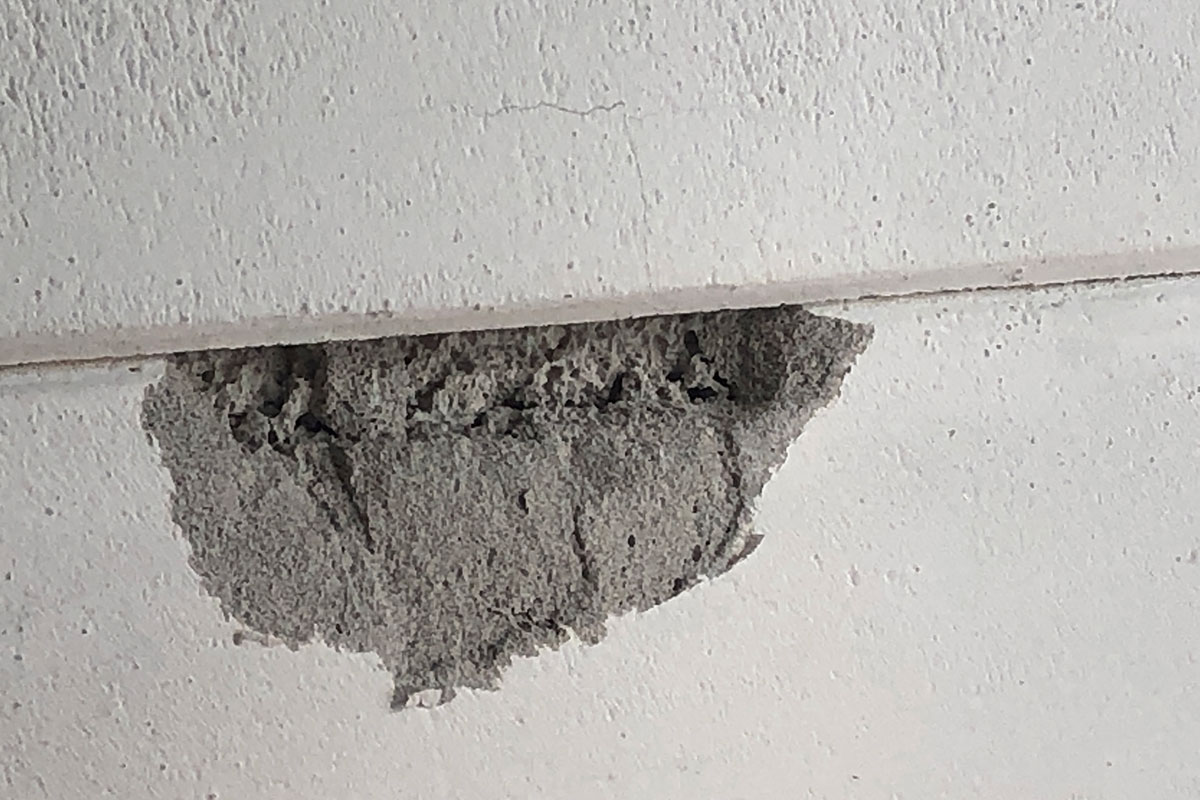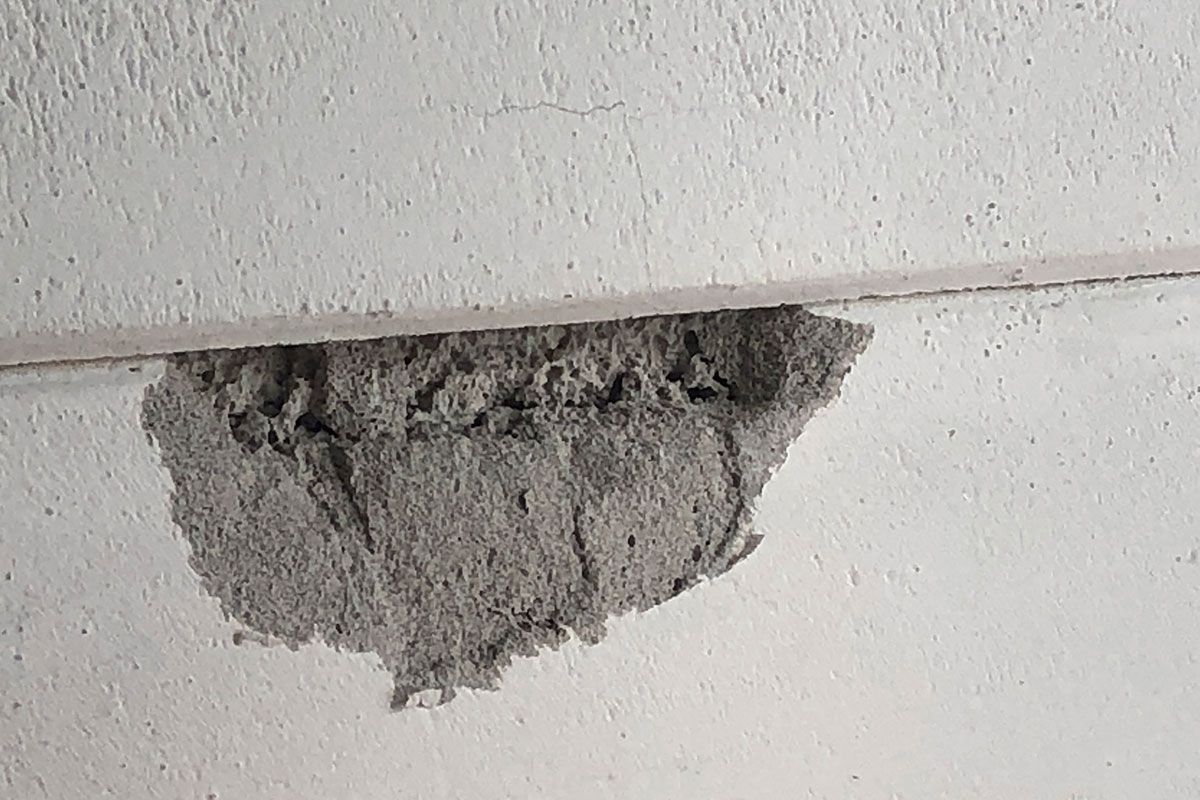RAAC and Ruin? A guide to RAAC in the home
RAAC and Ruin? A guide to RAAC in the home
RAAC, which stands for Reinforced Autoclaved Aerated Concrete, has been a prominent topic in the construction industry for several years, but last week hit the headlines with the closure of around 150 schools just days before reopening for the new school year.
A huge snowball effect is unfolding due to its widespread use between the 1950s and 1990s, with fears of even wider reaching consequences than first thought.
Whilst the current public outcry is focusing on schools, and to a lesser extent hospitals, what are the impacts of RAAC on your home? Here we look at the substance, and the realities of living with this questionable construction material.

RAAC – What’s the problem?
Many buildings dating from the 1950s to the 1980s incorporate this material into their structures. Unfortunately, its deterioration has led to structural failures in numerous buildings, both in the UK and abroad. Some of these incidents have had catastrophic consequences.
These concerns have prompted a comprehensive review of RAAC and its applications in UK buildings which we are currently watching unfold. The NHS estimates that repairing thirty hospitals could cost approximately £1 billion. Moreover, it is believed that approximately 1,500 schools were constructed using it during its peak usage. To a lesser degree, RAAC has been used in domestic construction, although its usage in this areas is believed to be far less widespread.
What is RAAC?
Reinforced Autoclaved Aerated Concrete (RAAC) was the poster-child material of 1950s construction, and offered a versatile, eco-conscious building material. Its rise to prominence was driven by its unique attributes; including its lightweight nature, exceptional thermal insulation properties, and environmentally friendly characteristics.
The origins of Autoclaved Aerated Concrete (AAC) trace back to the early 20th century, with its initial invention dating to the 1920s in Sweden. AAC quickly garnered attention across Europe due to its low density and user-friendly qualities. As time progressed, innovations paved the way for the evolution of Reinforced Autoclaved Aerated Concrete, incorporating steel reinforcement to bolster its structural integrity. The manufacturing process of RAAC involves blending cement, sand, lime, and aluminium powder with water, resulting in a robust yet lightweight porous material. Despite its name, it isn’t truly “concrete.”
RAAC has found extensive use in Europe, Asia, and Australia. Thanks to continuous enhancements and refinements over the years, RAAC has emerged as one of the construction industry’s most sought-after building materials.
The problem with RAAC
The production of substantial Reinforced Autoclaved Aerated Concrete planks involves a “foaming” procedure, incorporating silicate and calcareous chemicals along with bulking and accelerating agents. It is this ‘foam’ that the UK press have referred to the ‘Aero-like texture’ of RAAC. This foamy substance is intentionally created to adhere to the reinforcement, ensuring its structural integrity.
Nonetheless, planks can experience deflection (bending) between their support points due to various environmental factors, including loading, moisture infiltration, and thermal or carbon influences. Deflection has the potential to induce cracks, particularly in areas of the AAC material subjected to excessive stress or where it falters around the reinforcement. These fissures also permit moisture infiltration, which, in turn, can weaken the reinforcement itself.
RAAC was thought to have a life span of around 30 years. Whilst the most recent construction using RAAC stopped in the 1990s – which is just ‘coming of age’, much of the UK’s building stock utilising this material is significantly older.
As these planks degrade and potentially deflect more and more, they are weakened. This can ultimately lead to them fail entirely, with potentially dire consequences such as Singlewell Primary School in Kent, which collapsed in 2018.
Risks associated with Reinforced Autoclaved Aerated Concrete
The formulation and production of Reinforced Autoclaved Aerated Concrete introduce various risks to structures, including:
-
Structural Integrity: Although RAAC is recognised for its strength and durability, its structural integrity can be compromised due to design, construction, or improper reinforcement installation. In rare instances, this could result in structural issues such as wall, floor, or roof cracks or, in extreme cases, even collapse. These occurrences can pose significant dangers to occupants and neighboring properties.
-
Fire Resistance: While RAAC possesses inherent fire-resistant qualities, its precise composition and the presence of organic binders can influence its fire performance. The use of subpar or low-quality RAAC may not offer sufficient fire protection, potentially putting building occupants and nearby structures at risk.
-
Moisture and Water Damage: RAAC is susceptible to moisture infiltration if not adequately sealed or shielded. The ingress of water can trigger material deterioration, weakening the overall structure over time. This deterioration can lead to the growth of mould, degradation of surface finishes, and potential health hazards for building occupants.
The likelihood of finding RAAC in my home
The likelihood of finding RAAC in your home depends very much on the type of dwelling you own. Generally speaking, the likelihood of finding RAAC within a standard-construction house – be it detached, semi-detached or within a terrace is fairly low.
RAAC, from the typical examples of usage being schools and hospitals tended to be utilised within the construction of larger buildings. It is therefore reasonable to suspect that larger blocks of flats; especially those with flat roofs, may be more likely to feature RAAC. It is therefore anticipated that RAAC has been widely used within larger blocks of social housing constructed within that period of the 1950s-1990s.
What to do if I think I have RAAC in my home
While significant incidents involving Reinforced Autoclaved Aerated Concrete (RAAC) have occurred, it is crucial to emphasise that proper management can effectively mitigate its risks, provided that the material is well-maintained and not allowed to deteriorate significantly. To minimise the potential hazards associated with RAAC construction, the following measures should be put into practice:
-
Proper Design and Engineering: Engage experienced surveyors, structural engineers, and contractors well-versed in RAAC construction to evaluate existing RAAC structures. Conduct thorough structural analyses and implement necessary reinforcements to ensure the building’s stability and safety.
-
Quality Assurance: Utilise high-quality reinforcement materials and construction methods to ensure the safety of RAAC where found. Implement routine inspections and testing to guarantee compliance with industry standards.
-
Fire Protection Measures: Strictly adhere to fire safety regulations and apply suitable fire-resistant coatings or treatments to enhance the fire performance of RAAC structures. Additionally, install fire alarms and if appropriate sprinkler systems and evacuation plans to minimise fire-related risks.
-
Moisture Management: Incorporate comprehensive waterproofing measures during construction, with particular attention to joints, openings, and vulnerable areas susceptible to moisture infiltration. Regular maintenance and inspections should identify and rectify any signs of water damage, including the assessment of roof coverings to prevent leaks that could compromise the RAAC structure’s integrity.
RAAC, despite its inherent advantages, also presents significant risks that demand attention to ensure the safety of both properties and occupants. Given its prevalence in UK construction, whilst it’s not believed to be too commonly used in single dwellings, care must be taken to ensure you understand your property, and where relevant ensure that diligent maintenance and mitigation measures are used to substantially reduce the associated risks.
Contact Us
RAAC is undoubtedly a huge talking point within the press throughout the UK. And justly so.
Infinity Planning understand the levels of anxiety being caused by this problem. Whilst the first port of call should be a structural engineer or chartered building surveyor, Infinity Planning will endeavour to assist wherever possibly. Simply call 0800 148 8088 or complete the form below:

